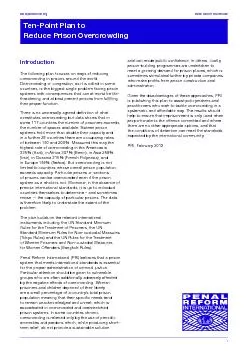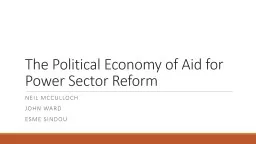PDF-Penal Reform International
Author : myesha-ticknor | Published Date : 2015-09-17
1 TenPoint Plan to Reduce Prison Overcrowding Introduction The following plan focuses on ways of reducing overcrowding in prisons around the world Overcrowding or
Presentation Embed Code
Download Presentation
Download Presentation The PPT/PDF document "Penal Reform International" is the property of its rightful owner. Permission is granted to download and print the materials on this website for personal, non-commercial use only, and to display it on your personal computer provided you do not modify the materials and that you retain all copyright notices contained in the materials. By downloading content from our website, you accept the terms of this agreement.
Penal Reform International: Transcript
Download Rules Of Document
"Penal Reform International"The content belongs to its owner. You may download and print it for personal use, without modification, and keep all copyright notices. By downloading, you agree to these terms.
Related Documents














![READ [PDF] Texas Penal Code, 2018 ed. (West\'s® Texas Statutes and Codes)](https://thumbs.docslides.com/1019651/read-pdf-texas-penal-code-2018-ed-west-s-texas-statutes-and-codes.jpg)